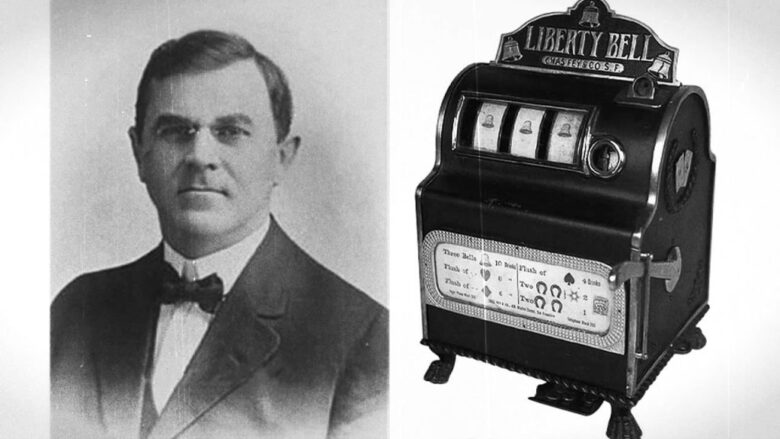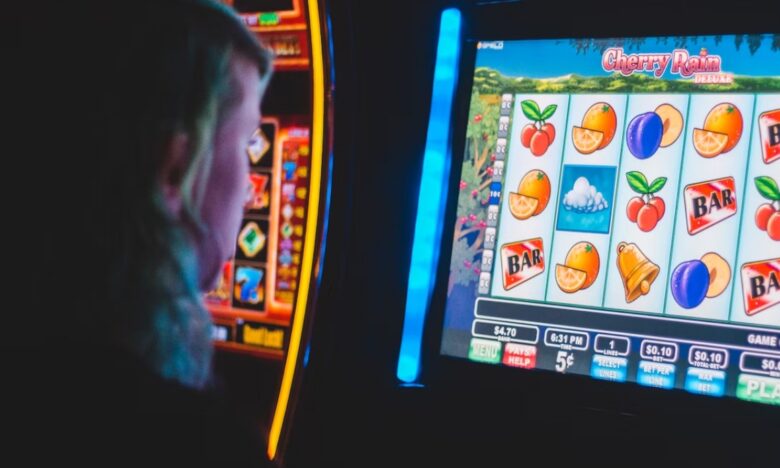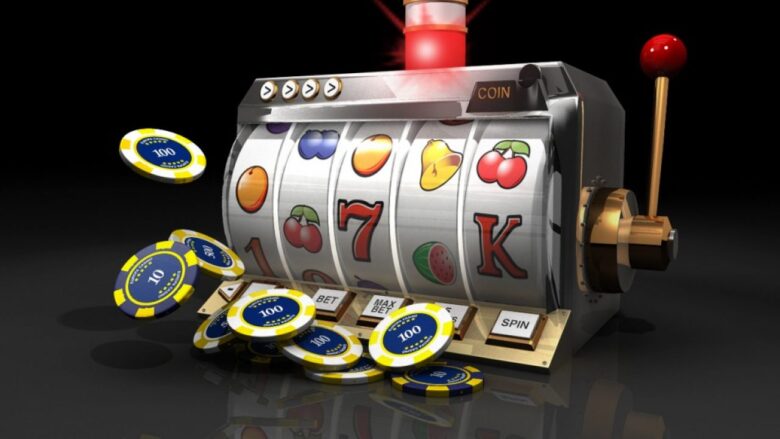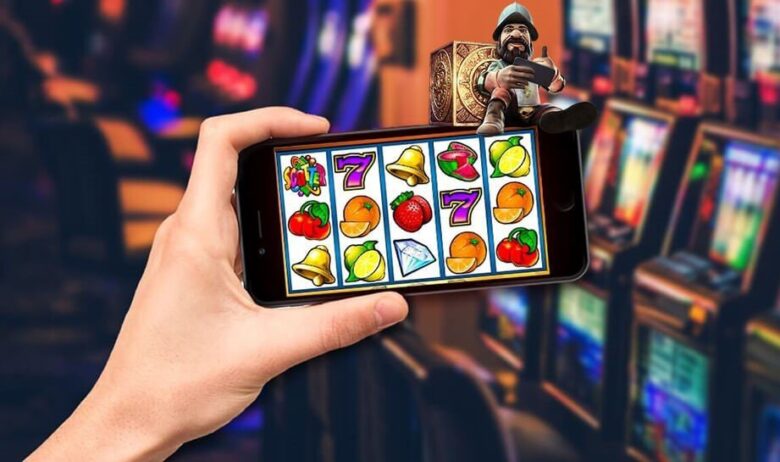In the vast and dynamic world of gambling, slot machines have long been the iconic symbols of chance and fortune. Over the decades, these spinning reels have evolved from clunky mechanical contraptions to sophisticated digital marvels, creating an immersive and thrilling gaming experience. This transformation not only reflects technological advancements but also mirrors the changing landscape of the gaming industry. In this article, we will delve into the fascinating journey of slot machine technology, tracing its roots, and exploring the innovations that have shaped its evolution.
Contents
The Mechanical Marvels: Birth of Slot Machines

Source: vegasslots.net
Origins and Early Days
The genesis of slot machines dates back to the late 19th century. In 1895, Charles Fey, a mechanic from San Francisco, introduced the world to the Liberty Bell, widely regarded as the first true slot machine. This mechanical marvel featured three spinning reels adorned with symbols like horseshoes, stars, and, of course, the Liberty Bell. The simplicity of the design, coupled with the thrill of a potential jackpot, captured the imagination of gamblers.
Mechanism Behind the Magic
Early situs slot machines operated on purely mechanical principles. The inner workings involved a system of gears, levers, and springs. When a player pulled the lever, it set the reels in motion. The alignment of symbols on the reels determined the outcome, and hitting the jackpot required a precise combination of symbols. The clinking sound of coins spilling into the tray added a tangible and satisfying element to the gaming experience.
Limited Symbols and Payouts
The early mechanical slots had a limited number of symbols, usually depicting fruits, bars, and lucky sevens. Payouts were relatively simple, with the highest reward typically reserved for landing three identical symbols in a row. As technology progressed, variations emerged, introducing new symbols and payout structures.
The Electromechanical Era: Adding Electricity to the Mix

Source: unsplash.com
Bally’s Money Honey
The 1960s marked a significant turning point with the advent of electromechanical slot machines. Bally Technologies, a pioneer in the gaming industry, introduced “Money Honey” in 1963, the first slot machine to incorporate electrical components. This innovation allowed for more complex game mechanics, including multiple coin denominations and higher jackpots.
Pushing the Boundaries
Electromechanical slots paved the way for the inclusion of additional features, such as flashing lights, sound effects, and even rudimentary bonus rounds. The introduction of electronic components brought a new level of excitement to the casino floor, attracting a broader audience.
The Rise of Video Slots
The late 1970s and early 1980s witnessed the next leap forward with the introduction of video slots. These machines replaced the traditional mechanical reels with video screens, offering a more dynamic and visually engaging experience. The possibilities expanded as game developers experimented with graphics and animations.
The Digital Revolution: Embracing Computer Technology

Source: usaonlinecasino.com
Microprocessors and RNGs
The 1990s heralded the era of fully digital slot machines. The integration of microprocessors allowed for more sophisticated random number generators (RNGs), eliminating the need for physical reels. This shift not only enhanced the fairness of the games but also opened the door to a multitude of creative possibilities.
Virtual Reels and Symbol Variety
Digital technology enabled the introduction of virtual reels, providing game developers with greater flexibility in designing winning combinations. Slot machines began featuring a broader array of symbols, themes, and bonus features, enhancing the overall entertainment value for players.
Networked Gaming and Progressive Jackpots
The advent of computer technology facilitated the networking of slot machines within a casino or even across multiple locations. This interconnected system paved the way for progressive jackpots, where a small percentage of each bet contributed to a growing prize pool. This innovation created the potential for life-changing payouts, capturing the imagination of players worldwide.
The Online Frontier: Slot Machines in the Digital Age

Source: gaming.net
Internet Paves the Way
The emergence of the internet in the late 20th century revolutionized the gaming industry. Online casinos began to offer virtual slot machines, allowing players to enjoy their favorite games from the comfort of their homes. The transition from physical to digital not only expanded accessibility but also introduced a new level of convenience.
Diverse Themes and Immersive Experiences
Digital slot machines embraced diverse themes, ranging from ancient civilizations to outer space adventures. The virtual realm allowed for intricate graphics, captivating animations, and immersive soundscapes, creating a more engaging and entertaining experience for players.
Mobile Gaming Takes Center Stage
With the proliferation of smartphones and tablets, mobile gaming became the next frontier for slot machines. Players could now spin the reels while on the go, further blurring the lines between the physical and digital worlds. Mobile compatibility became a standard feature for online casinos, ensuring that players could enjoy their favorite slots anytime, anywhere.
Modern Innovations: Bringing Slot Machines into the 21st Century

Source: online-casinos.com
3D Graphics and Virtual Reality
Recent years have witnessed the integration of 3D graphics and virtual reality (VR) technology into slot machines. These advancements elevate the gaming experience to new heights, immersing players in visually stunning and interactive worlds. Virtual reality slots, in particular, provide a sense of presence and realism, creating an unparalleled level of engagement.
Skill-Based Elements
In a departure from traditional purely luck-based gameplay, some modern slot machines incorporate skill-based elements. These games challenge players to use their abilities to influence the outcome, introducing an element of strategy and skill to the traditionally chance-driven world of slots.
Cryptocurrency and Blockchain Integration
The rise of cryptocurrencies has also made its mark on the slot machine landscape. Some online casinos now accept digital currencies for deposits and withdrawals. Additionally, blockchain technology is being explored to ensure transparent and provably fair gaming experiences, addressing concerns about the integrity of random number generation.
Conclusion
From the clinking gears of the Liberty Bell to the immersive virtual worlds of modern slot machines, the evolution of this iconic gambling device has been nothing short of a digital odyssey. The journey from mechanical simplicity to digital complexity reflects not only technological progress but also the evolving tastes and expectations of players.
As we look to the future, the trajectory of slot machine technology appears boundless. Innovations such as augmented reality, artificial intelligence, and even more immersive storytelling are poised to redefine the gaming landscape once again. The allure of the spinning reels continues to captivate, ensuring that the evolution of slot machines remains a thrilling and ongoing saga in the ever-changing world of gambling.
